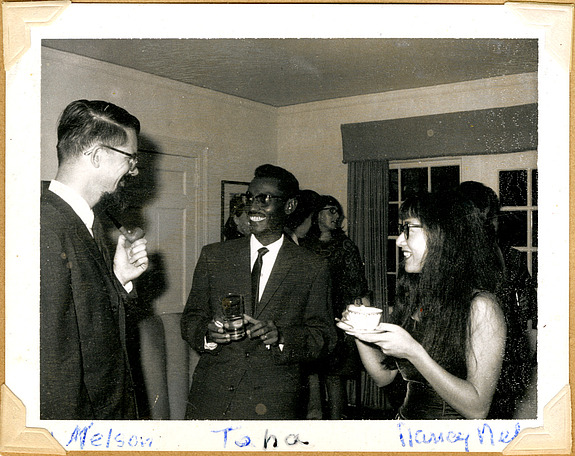Of Historical Note: Reflections on Analytic Vectors

Edward Nelson, Member in the Schools of Mathematics (1956–59, 79–80) and Natural Sciences (1963–64, 67–68, 73–74) and Professor of Mathematics at Princeton University until his death in 2014, was an original thinker best known for successfully applying probability to quantum field theory. The following article, first published in volume 17 of Current Contents (April 25, 1983), reflects upon the work he did at the Institute on analytic vectors.
When I did this work twenty-three years ago, I was twenty-three years younger than I am now. I was invited to lecture about it at Harvard University, and I went with every expectation of a job offer that did not materialize. The title of my lecture was “The Heat Equation on Lie Groups.” Someone told me that when the title was announced at the previous week’s colloquium, the audience burst into laughter. What struck them as funny was the juxtaposition of something with applied connotations (heat equation) with something that sounded pure (Lie groups). Today’s mathematical audiences, even at Harvard, are more sophisticated, and a similar title now would strike no one as funny—which shows that the world does make progress.
When I did this work, I was a fresh Ph.D. at the Institute for Advanced Study. My wife and I lived in the brand-new Institute housing. On the other side of our apartment wall lived Lars Gårding. He was intrigued by the use of the heat equation to produce analytic vectors and told me, ruefully and quite rightly, that it was a method he should have thought of himself. He invited me to his apartment to explain to him the use of diffusion processes in deriving properties of the heat equation—at that time this technique appeared bizarre, and he wrote a paper1 eliminating probability theory from the proof. Our new apartments were frequently invaded by field mice that had been displaced by the construction. Gårding would balance a soup bowl on a matchstick over bait, so that he could release the mice alive and unharmed.
I knew the referee for the paper to be Pierre Cartier, who had written a paper2 with Dixmier on analytic vectors and who was spending a year at the Institute, because shortly after I told Cartier about the work André Weil asked me to submit it to the Annals of Mathematics. Mathematicians are prone to some defects in character, as my wife—and any outspoken mathematician’s spouse—is not loath to point out. But one crucial trait that makes us pleasanter than our colleagues in the humanities ensures that a totally unknown scholar has no difficulty in having worthwhile work recognized.
For a modern account of operator commutation relations, see the monograph3 by Jorgensen and Moore.
I suspect that this paper4 has been frequently cited because it provided a useful way of showing a Hermitean operator to be self-adjoint. Then courtesy demanded that anyone using this rather simple method give a reference to my paper. No one, asked to name a seminal paper of the late-1950s in functional analysis or group representations, would choose this paper. This indicates the absurdity of using a citation index as a measure of quality. The American passion for the seemingly objective as a substitute for informed personal judgment is symptomatic of a failure of vigor and self-reliance.
1. Gårding, L., “Vecteurs analytiques dans les représentations des groupes de Lie,” Bull. Soc. Math. Fr. (1960) 88:73–93.
2. Cartier, P. and Dixmier, J., “Vecteurs analytiques dans les représentations des groupes de Lie,” Amer. J. Math. (1958) 80:131–45.
3. Jorgensen, P. E. T. and Moore, R. T., Commutation Relations for Operators, Resolvents, and Semigroups with Applications to Group Representations and Mathematical Physics, Preprint, Mathematics Institute, Aarhus University, 1982.
4. Nelson, E., “Analytic Vectors,” Annals of Mathematics (1959): 70:572–615.